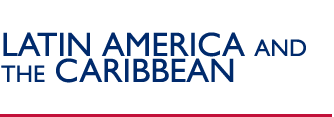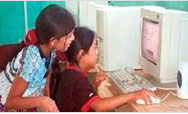Overview
 One of the world's most troubled countries, Haiti is by far the poorest in the Western Hemisphere. With an estimated population over 8.5 million, Haiti’s hard-working citizens and limited but diverse agricultural and natural resources remain the country’s greatest assets for the future. Under the leadership of President Préval, economic growth has turned positive (2.5% in 2006). However many challenges remain, including: One of the world's most troubled countries, Haiti is by far the poorest in the Western Hemisphere. With an estimated population over 8.5 million, Haiti’s hard-working citizens and limited but diverse agricultural and natural resources remain the country’s greatest assets for the future. Under the leadership of President Préval, economic growth has turned positive (2.5% in 2006). However many challenges remain, including:
- 6.2 million live below the poverty line;
- 1 out of 8 children die before they reach the age of five;
- Illiteracy is estimated to be 44%;
- Formal unemployment rate is 70% nationally;
- Nearly 7.2 million Haitians lack access to reliable energy;
- Environmental degradation is pervasive;
- Haiti ranks 154 of 177 countries in the UN's Human Development Index;
- Life expectancy is 56 (women) and 52 (men) years old;
- A UN Stability Mission is currently authorized at 7,200 troops and 1,951 civilian police.*
U.S. policy toward Haiti is designed to: foster and strengthen democracy; help alleviate poverty, illiteracy, and malnutrition; promote respect for human rights; and counter illegal migration and drug trafficking. USAID supports Haiti in its efforts to: promote stability; implement democratic reforms; build public institutions; provide access to services for its citizens, particularly in health and education; increase economic growth and job opportuntities; and respond to natural disasters.
Programs
Peace and Security
USAID supports conflict mitigation programs that complement U.S. Embassy security programs in communities, to advance the objective of peace and securty. U.S. government (USG) implementing partners employed nearly 115,000 people in 2007 as part of programs that benefited over 750,000 at risk individuals in 143 city hotspot neighborhoods.
Governing Justly and Democratically
USAID and U.S. Embassy programs strengthen Haitian democracy, as evidenced by successful local elections and the establishment of two presidential justice commissions in 2007. Civic education and political party programs encourage peaceful voter participation. Support to the Legislature has facilitated adoption of critical legislation including the UN convention against corruption and the law establishing a Judicial Council. USAID assistance enables the government of Haiti (GOH) to greatly increase transparency and oversight of public finances.
Investing in People
USAID has helped increase the Haitian Government’s leadership and management capacity in the Health and Education sectors during 2007. Access to basic health services was provided to 47% of the population (about 4.1 million people). 60,000 children were fully vaccinated; 75,000 were treated for diarrhea diseases and acute respiratory infections; and 350,000 reproductive health services were delivered. Over 400,000 persons were reached in AIDS prevention activities and 30,000 AIDS-related orphans and vulnerable children received support. Development of a national school license program improved management of the primary education system. 96,589 students benefited from distance-based education; 16,500 students received scholarships; and 675 PTAs were trained. USAID also provided funding for nearly 2.4 million school textbooks.
Economic Growth
USAID programs improve economic opportunities and livelihoods for Haitians. In 2007, USAID increased access to financial services for 244,000 micro-enterprises and linked 7,000 through value chain activities. Support for an Investment Facilitation Center reduces paperwork and de-lays in registering new businesses. A workforce development program reached 2,200 unemployed youth. Haiti’s three principal ports were certified as compliant with international security standards. USAID also designed new watershed management programs.
Humanitarian Assistance
More than 10,000 of the most vulnerable segments of the population (orphans, handicapped, elderly) benefit from USAID-funded services including nutritional supplements, health and hygiene. USAID also supports the National System for Disaster and Risk Management through training provided to the National Food Security Coordination Agency (CNSA) and the Civil Protection Directorate (DPC).
|


